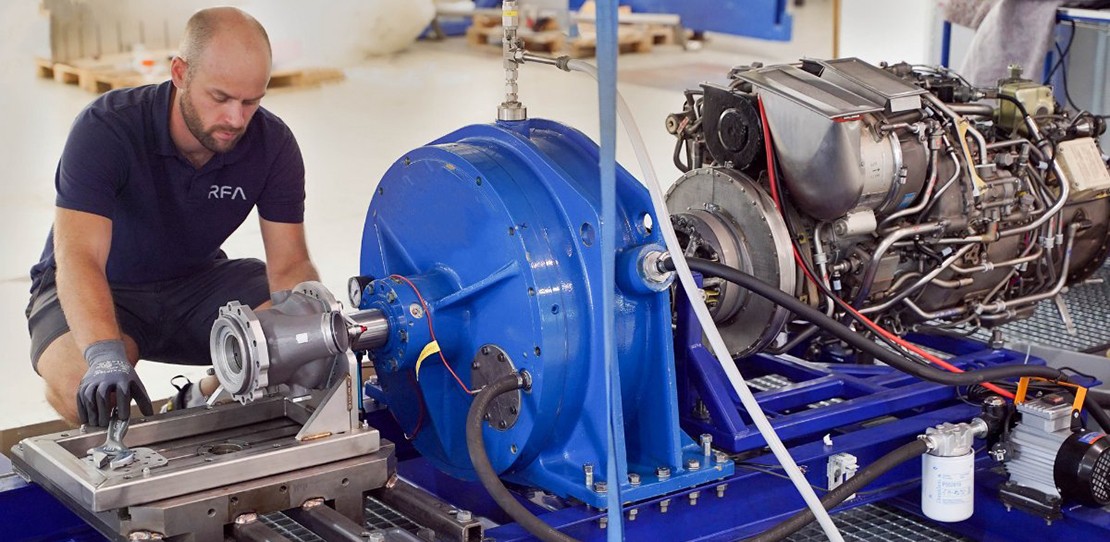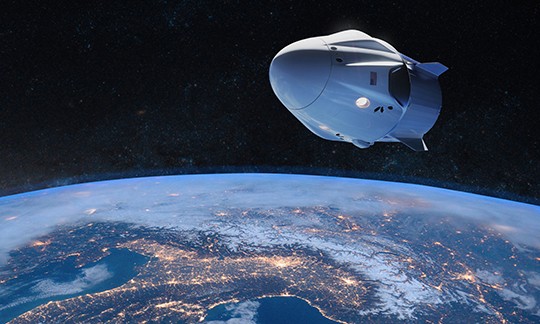
Test Boosts and Accelerates Private Rocket Launches
CUSTOMER STORY
SPACE LAUNCH AND EXPLORATION | 4 MINUTE READ
NI test and measurement solutions are helping Rocket Factory Augsburg ensure its RFA ONE launcher is safe and reliable.
“Cleared for launch” is no longer a phrase reserved for national space agencies and the early trailblazers of the NewSpace movement. In fact, businesses from other industries are adding space divisions in order to build relationships with the companies competing in the race to explore the new frontier. These businesses stand to benefit from access to a trove of shared data. Infrastructure in space is integral to supporting life on Earth. Satellites in low Earth orbit are providing services, real-time data, and insights to initiatives in aerospace and defense, agriculture, communications, climate, and many others.
Building the technology that can deliver mission-critical assets to space is no easy feat. German startup Rocket Factory Augsburg (RFA) is going a step further to democratize access to space and reduce launch costs by building rockets the same way automobile manufacturers build cars. Rocket science is complicated enough as it is, so why not use the powerful tools, factory concepts, and serial production strategies that made automobiles commonplace?
RFA is manufacturing its rockets with commercially available, industrial-grade components from the automotive, energy, and oil and gas industries. By opening boundaries beyond components specifically designated for space, RFA has been able to develop and manufacture its rockets with a more modular, agile, and standardized approach that decreases cost per unit and ensures consistency.

RFA’s initial engine test facility started as a group of shipping containers joined together, but its team, missions, and sites are growing immensely. With NI’s help, RFA has been able to engineer more efficiently, flexibly, and quickly—and has integrated more automation to validate that components coming from different manufacturing processes meet tight specifications to work with all systems. NI test and measurement solutions also helped RFA ensure its rockets were safe against extreme, unpredictable conditions encountered during a space launch and reliable enough to sustain precise in-orbit delivery and high volumes of launches with small to medium payloads. Expected in late 2023, the RFA ONE launcher will send satellites into low Earth orbit with a total mass of up to 1.3 tons.
In addition to reducing launch costs, RFA is dedicated to reducing emissions. It has designed, developed, and commissioned the first European engine with staged combustion, called “Helix.” This engine uses a closed-cycle system, which makes it highly efficient and produces fewer emissions compared to other, more conventional rocket engines. RFA demonstrated Helix’s performance with an eight-second hot fire test in 2021. In July 2022, RFA reached another milestone by performing a 74-second hot fire test, during which a Helix engine was fired three times in a row without the need to replace any components. Further tests will follow, with RFA increasing the duration of the hot fire operation and overall performance of the entire engine.
Video courtesy of Rocket Factory Augsburg (RFA)
Though the private space industry is relatively new, and getting things launched into orbit still presents significant challenges, engineers are constantly searching for points of failure to avoid worst-case scenarios and ensure success.
Space flight requires the harshest testing environments. Intense noise, vibration, and electromagnetic radiation can distort measurements or functionalities during the rocket’s flight. To calibrate, engineers must test sensors, instruments, and values multiple times, not only with redundancy but also in multiple scenarios to ensure accuracy. Automation and simulation can help correlate data and results.
Failure tests are run extensively on vital parts of the launch vehicle:
- For its burst test, liquid nitrogen (as a test equivalent of rocket fuel) is pumped into the RFA launcher’s reusable stainless steel core stage to the point of rupture. Assessing pressure limits helps extend the reusability of RFA’s core stage and keeps the launcher in RFA’s fleet for longer.
- Turbo pumps deliver cryogenically stored rocket fuel into the combustion chamber of the rocket engine during tests. Engineers ensure that even with deviating parameters, the turbo pump regulates itself and the whole system works safely and as expected.
- Actuators, which are used to steer the rocket mid-flight, are tested for their ability to operate under extreme conditions and overcome unforeseen circumstances to help the rocket stay on course.
Engineers must anticipate failure, from large components like Helix engines to smaller ones like the many computers all over the rocket that send and receive signals. NI helped RFA’s team validate subsystems throughout its launch system quickly and thoroughly.
Read NI’s full case study to learn how RFA optimized their engineering processes to stay focused on innovation with the help of NI professionals, services, and solutions.



